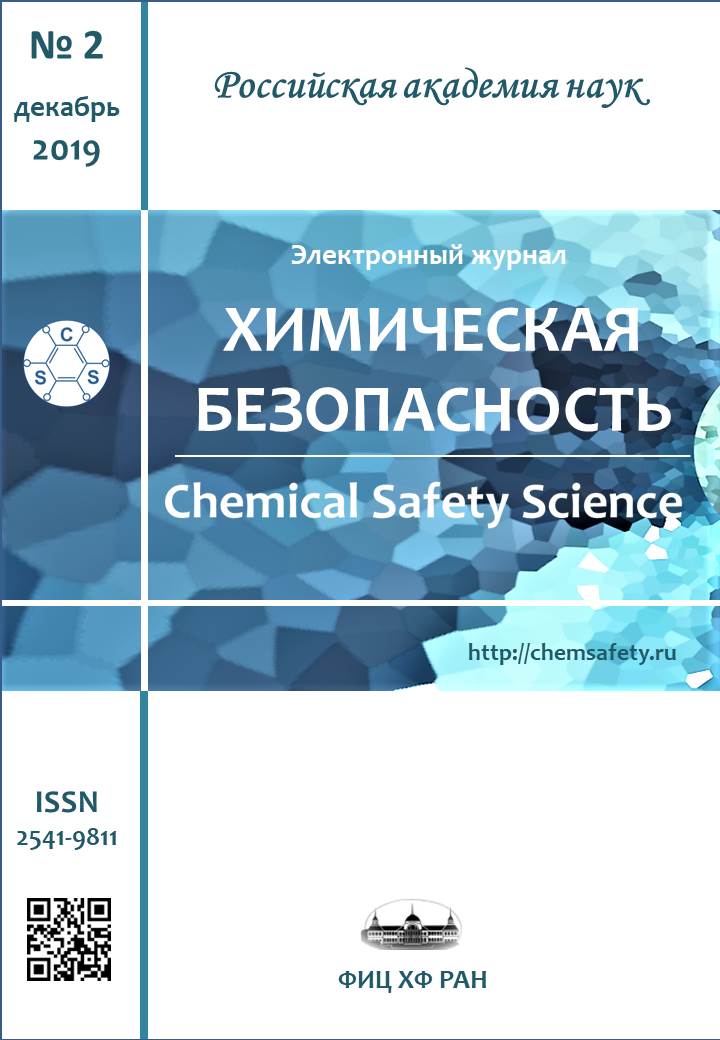Utilization of Phenol and its Derivatives Using Horseradish Peroxidase Immobilized on Natural Biopolymers
Abstract
Utilization of highly toxic for humans and environment anthropogenic pollutants - phenol and its derivatives is recognized as being of great importance in the field of ensuring chemical safety. In this work, synthesis and investigation of catalytic properties of effective biocatalysts for oxidation of phenol and its derivatives have been performed, whereas the catalysts are based on microspheres of sodium alginate and horseradish peroxidase extracted from central parts of Armoracia rusticana root. Immobilization of horseradish peroxidase on sodium alginate based microspheres has been carried out using carbodiimide and N-hydroxysuccinimide for the purpose of activation of carboxyl groups of the carrier, followed by their crosslinking with amino groups of the enzyme. The optimal ratio of the components is determined which provides maximum activity of the biocatalyst in the reactions of oxidation of phenol and 4-chlorophenol. The immobilized biocatalyst retains ca. 25-30% of the original activity of the soluble enzyme, and can be recommended for multiple use without sufficient loss of activity.
References
Grushko Ya.M. Hazardous organic compounds in industrial wastewater. L.: Khimiya, 1982. 214 p. [in Russian].
Maystrenko V.N., Klyuev N.A. Ecological-analytical monitoring of persistent organic pollutants. M.: Binom, 2011. 323 p. [in Russian].
Fatikhova N. I., Yagafarova G.G., Korzhova L.F., Leontjeva S.V., Yagafarova D.I. // Vestnik tekhnologicheskogo universiteta [Bulletin of Technological University]. 2016. V. 19, No. 10. P. 152 [in Russian].
Bayramoglu G., Аriса М. Y. // Journal of Hazardous Materials. 2008. V. 156. No. 1-3. P. 148. DOI: 10.1016/j.jhazmat.2007.12.008.
Veitch N.C. Horseradish peroxidase: a modern view of a classic enzyme // Phytochemistry. 2004. V. 65. No. 3. P. 249. DOI: 10.1016/j.phytochem.2003.10.022.
Bilal M., Iqbal H.M.N. // International Journal of Biological Macromolecules. 2019. V. 130. P. 462. DOI: 10.1016/j.ijbiomac.2019.02.152.
Malik D.J., Sokolov I.J., Vinner G.K. et al. // Advances in Colloid and Interface Science. 2017. V. 249. P. 100. DOI: 10.1016/j.cis.2017.05.014.
Zhao L., Wang J., Zhang P., Gu Q., Gao Ch. Absorption of Heavy Metal Ions by Alginate. In: Bioactive Seaweeds for Food Applications. Ed. Yimin Qin. Academic Press, 2018. P. 255. DOI: https://doi.org/10.1016/C2016-0-04566-7.
Asadi S., Eris S., Azizian S. // ACS Omega. 2018. V. 3(11). P. 15140. DOI: 10.1021/acsomega.8b02498.
Copyright (c) 2019 V. G. Matveeva1,2*, B. B. Tikhonov, P. Yu. Stadol’nikova, and A. I. Sidorov

This work is licensed under a Creative Commons Attribution-NonCommercial 4.0 International License.












